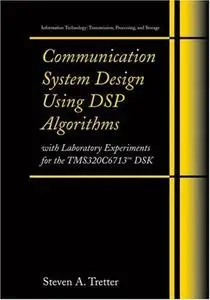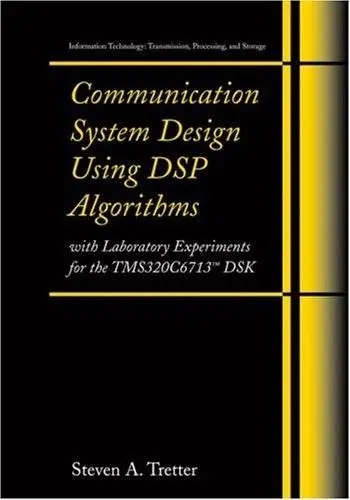Steven A. Tretter "Communication System Design Using DSP Algorithms:
With Laboratory Experiments for the TMS320C6713 DSK "
Springer | 2008-01-04 | ISBN:0387748857 | 348 pages | PDF | 1,7 Mb
With Laboratory Experiments for the TMS320C6713 DSK "
Springer | 2008-01-04 | ISBN:0387748857 | 348 pages | PDF | 1,7 Mb
Designed for senior electrical engineering students, this textbook explores the theoretical concepts of digital signal processing and communication systems by presenting laboratory experiments using real-time DSP hardware. Originally designed for the Texas Instruments TMS320C6701 Evaluation Module or TMS320C6711 DSK, this new edition updates the experiments based on the TMS320C6713 (but can easily be adapted to other DSP boards). Each chapter begins with a presentation of the required theory and concludes with instructions for performing experiments to implement the theory. In the process of performing the experiments, students gain experience in working with software tools and equipment commonly used in industry.
The primary focus of this book is on communication systems. Algorithms that are particularly suited to DSP implementations are presented. Chapters 1 and 2 introduce the software and hardware tools. Chapter 3 presents FIR and IIR digital filters and Chapter 4 investigates the FFT. Chapters 4 through 8 discuss modulators and demodulators for classical analog modulation methods such as amplitude modulation (AM), double-sideband suppressed-carrier amplitude modulation (DSBSC-AM), single sideband modulation (SSB), and frequency modulation (FM). Chapters 9 through 16 explore digital communication methods leading to the implementation of a complete telephone-line modem. These chapters include shift register pseudo-random binary sequence generators, the RS-232 protocol, pulse amplitude modulation (PAM), quadrature amplitude modulation (QAM) transmitters and receivers, and echo cancellation. Methods for adaptive equalization, carrier recovery, and symbol clock tracking are presented. Chapter 17 gives suggestions for additional experiments.



